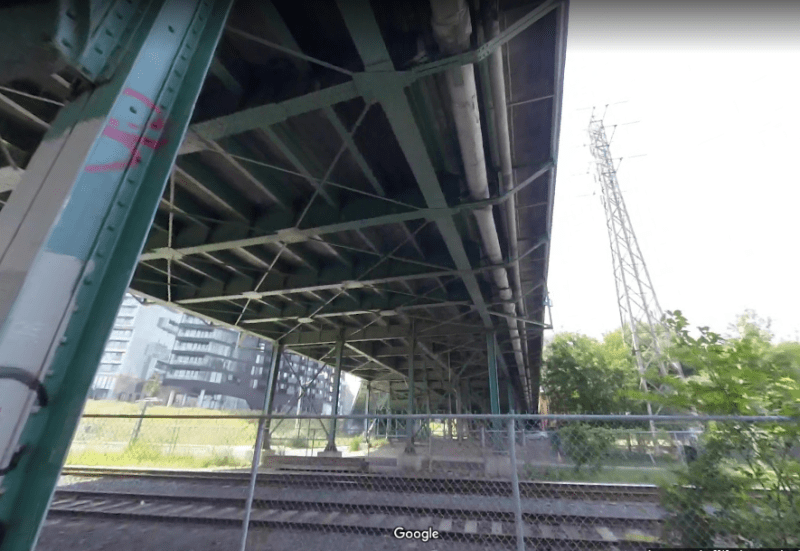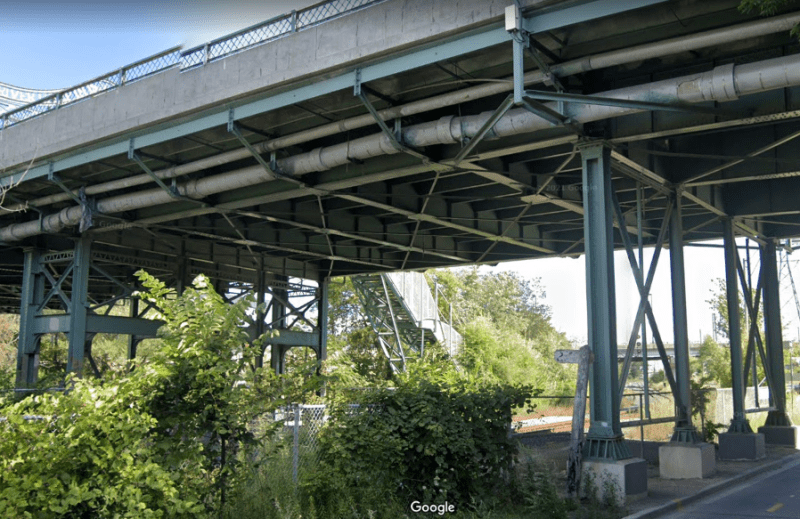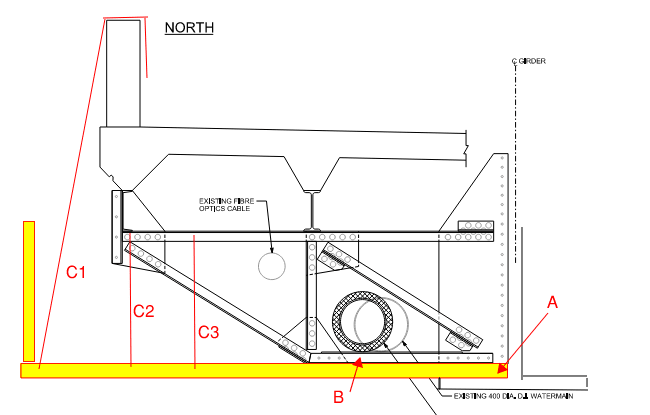tmalik3156
Structural
Good day.
Just wondering if anyone can give me some suggestions on putting up a temporary work platform for the situation shown in the two photos.
The big watermain pipe needs to be replaced. The work platform can not hang below the bottom of the exterior girder due to clearance restrictions for the train track below. Working from ground using a boom (e.g., Genie lift) is also ruled out. A mobile access platform (e.g., Bridgemaster) parked on the deck above can not be used because of traffic. The Girder is about 3 feet 4 inches deep.
Would it be a good idea to attach plywood to the bottom of the cantilevering brackets?


Just wondering if anyone can give me some suggestions on putting up a temporary work platform for the situation shown in the two photos.
The big watermain pipe needs to be replaced. The work platform can not hang below the bottom of the exterior girder due to clearance restrictions for the train track below. Working from ground using a boom (e.g., Genie lift) is also ruled out. A mobile access platform (e.g., Bridgemaster) parked on the deck above can not be used because of traffic. The Girder is about 3 feet 4 inches deep.
Would it be a good idea to attach plywood to the bottom of the cantilevering brackets?



